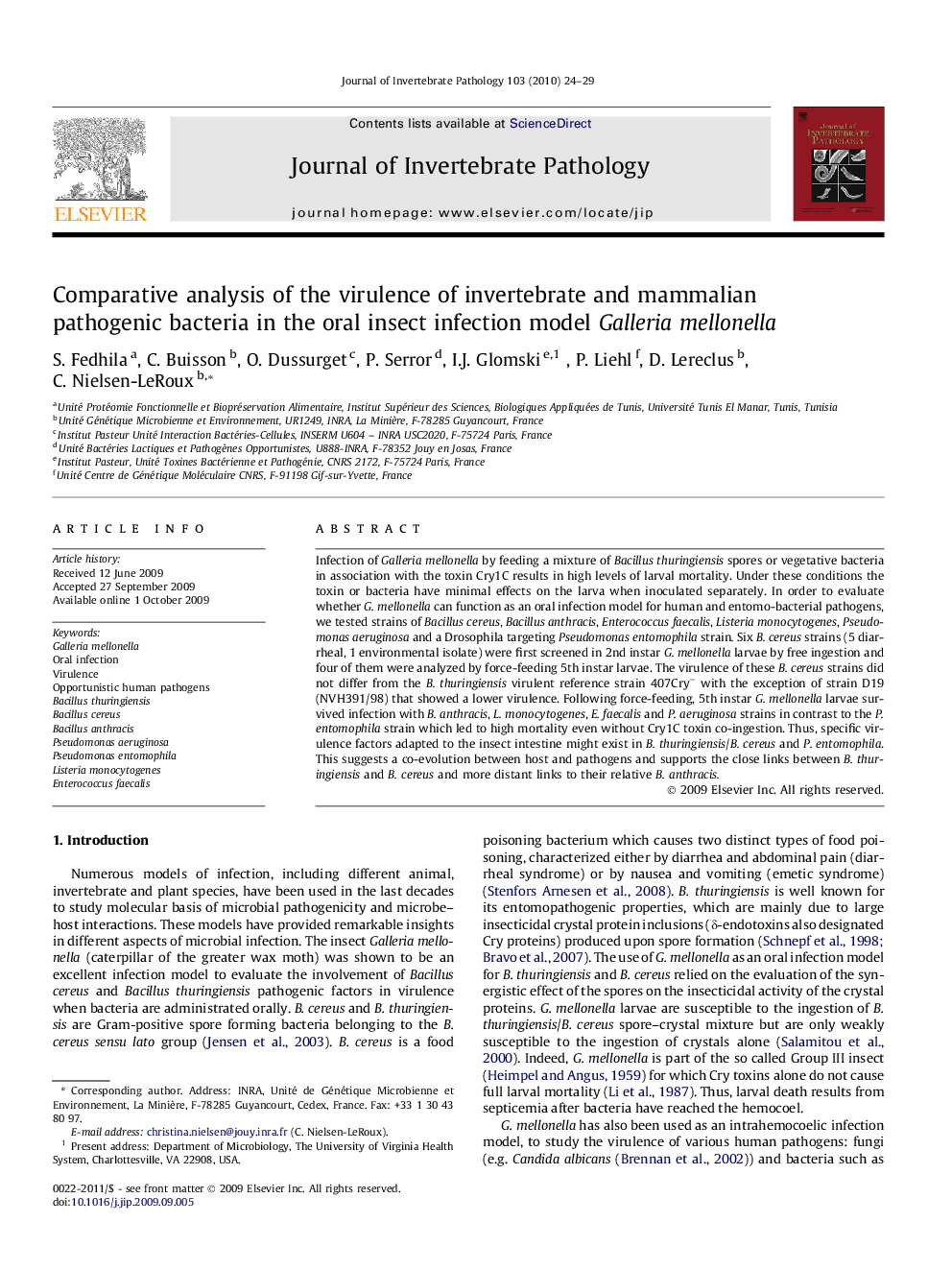| Article ID | Journal | Published Year | Pages | File Type |
|---|---|---|---|---|
| 4558314 | Journal of Invertebrate Pathology | 2010 | 6 Pages |
Infection of Galleria mellonella by feeding a mixture of Bacillus thuringiensis spores or vegetative bacteria in association with the toxin Cry1C results in high levels of larval mortality. Under these conditions the toxin or bacteria have minimal effects on the larva when inoculated separately. In order to evaluate whether G. mellonella can function as an oral infection model for human and entomo-bacterial pathogens, we tested strains of Bacillus cereus, Bacillus anthracis, Enterococcus faecalis, Listeria monocytogenes, Pseudomonas aeruginosa and a Drosophila targeting Pseudomonas entomophila strain. Six B. cereus strains (5 diarrheal, 1 environmental isolate) were first screened in 2nd instar G. mellonella larvae by free ingestion and four of them were analyzed by force-feeding 5th instar larvae. The virulence of these B. cereus strains did not differ from the B. thuringiensis virulent reference strain 407Cry− with the exception of strain D19 (NVH391/98) that showed a lower virulence. Following force-feeding, 5th instar G. mellonella larvae survived infection with B. anthracis, L. monocytogenes, E. faecalis and P. aeruginosa strains in contrast to the P. entomophila strain which led to high mortality even without Cry1C toxin co-ingestion. Thus, specific virulence factors adapted to the insect intestine might exist in B. thuringiensis/B. cereus and P. entomophila. This suggests a co-evolution between host and pathogens and supports the close links between B. thuringiensis and B. cereus and more distant links to their relative B. anthracis.
